Today, we will continue our series on overcoats & topcoats with the Covert Coat. In this guide, we will discuss the history of the garment,
the Covert fabric as well as the color and a number of other things features of this topcoat.
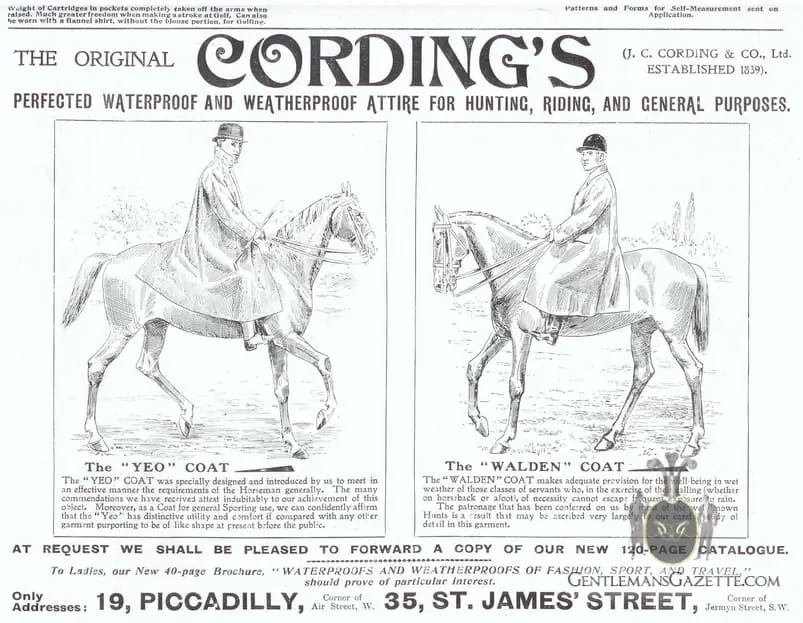
History Of The Covert Coat
Originally, the Covert Coat surfaced in the late 19th century and was designed to be worn when riding. However, by 1890, it had become adopted by the masses and basically every elegant gentleman had a Covert Coat in his closet. Interestingly, it was very similar to the Chesterfield Coat, but even back then, the Covert coat was rarely longer than 34 inches and is thus a rather short overcoat, especially for 19thcentury standards. It was cut straight down, had side slits that were between 4 and 6 inches long and seams that were either strapped or double stitched.
In 1893, it was cut much more fitted and was usually just 3 inches longer than the lounge coat worn underneath it. Also, it was single breasted and now had a fly front as well as 4 pockets. Four years later, the first Covert Coat with Raglan sleeves appeared on London streets, but this fashion never really caught on. Over the next two decades, the style hardly changed and its mass appeal faded. By the 1950’s, the Covert Coat was en vogue again and now featured a flapped chest pocket. The basic characteristics of the Covert Coat were as follows and remained unchanged ever since:
- Single breasted with a fly front
- Notched lapels
- Made of Covert cloth
- Short topcoat that is just a little longer than the jacket beneath
- Signature four (sometimes five) lines of stitching at the cuffs and hem, and optionally on the flap of the chest pocket
- Center vent
- Two flap pockets with optional ticket pocket
- The collar is constructed either of covert cloth or velvet
- Poacher’s pocket
The two standout features of the Covert Coat are the four rows of stitching and the poacher’s pocket. Since it originated as an equestrian coat, a legend claims that the four rows of stitching were supposed to stop the cloth from being pulled out when jumping through brambles or over bushes.
The large pocket in the area of the thigh was originally used for game when hunting. Today, you may still do that, though I doubt you will ever go hunting mounted with a Covert Coat. In any case, it is big enough for a newspaper or even an iPad.
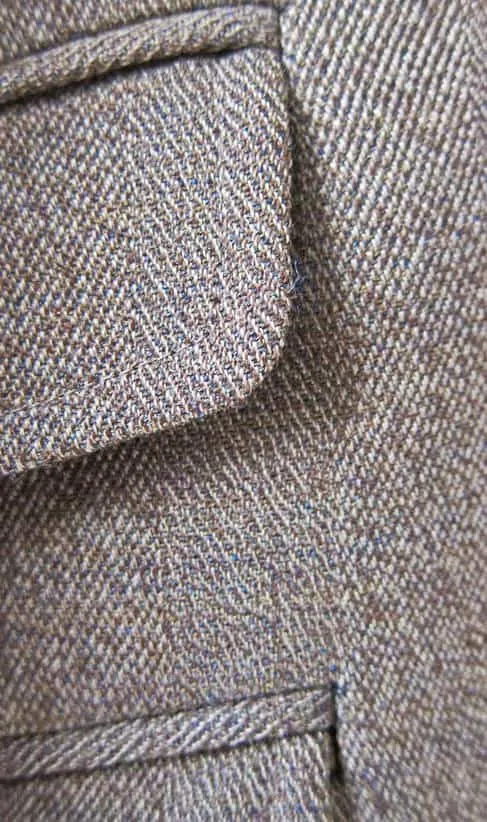
The Covert Color
“Covert” is not only the name of the coat, but the moniker also refers to the fabric and even the various color shades traditionally used. The Covert colors range from a light greenish-tan brown to a fawnish mix to a rather deep tannish-green. Some theorize that the brownish color was developed so that horse hair would not be visible against the fabric. Others believe that the Covert colors were deliberately selected because they do not look sullied after the mud and dust had done their damage.
One of the outstanding aspects of the Covert color is the manner in which it is equally at home with every shade of suit, overcoat or accessory. It is a decidedly versatile palette of colors.
The Covert Cloth
The Covert cloth receives its name from a very early association with the sport of (mounted) hunting. This material was primarily used for apparel worn by hunters and riders who met at an appointed rendezvous in or near a covert, which was a thicket that provided cover for game. Such a location would serve as a starting point for the day’s hunting.
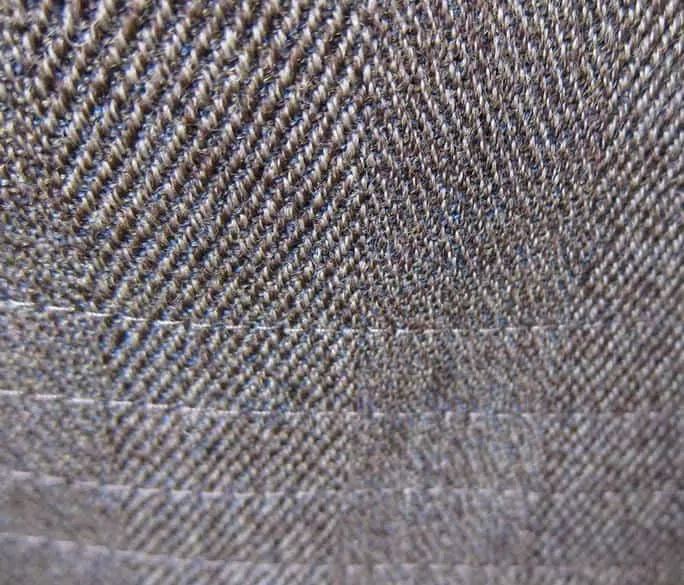
It seems natural that the fabric produced for this very specific purpose had to withstand all kinds of weather, mud, and bush-encounters during any good hunt. Even though the covert technically just provided protection for the game, the Covert cloth borrowed the name since it afforded protection to the hunter.
In order to fulfill its purpose, the Covert Cloth was traditionally rather heavy- sometimes weighing as much as 29 or 30 ounces a yard (about 900 grams per meter) – but today it commonly weighs about 14 ounces per yard or roughly 430 grams per meter. In order to further enhance its protective purpose, this tweed was woven very tightly and usually had a woolen weft.
Today, you will also find Covert coats in a herringbone cloth or other variations ranging from navy to beige, though this is a clear deviation from the original.
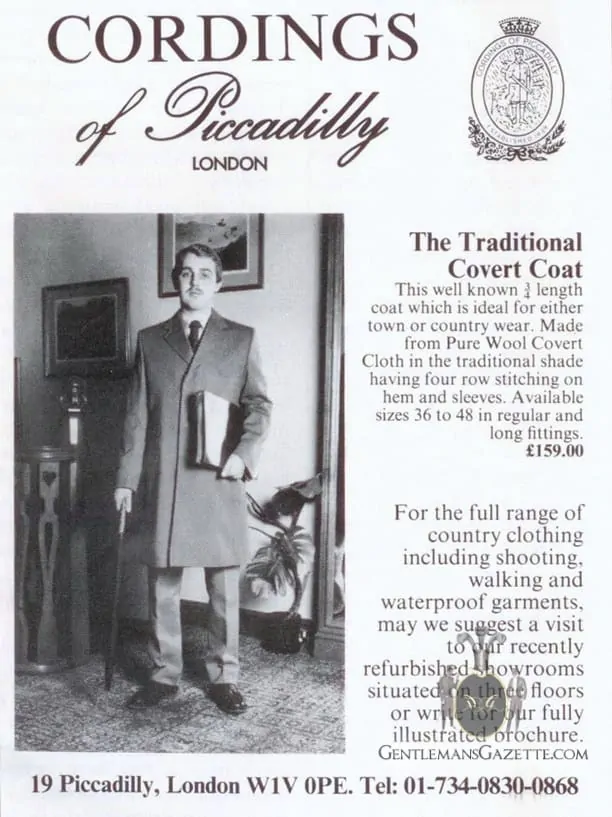
The Covert Coat Index
A few years ago Bernhard Roetzel, the German author of The Gentleman Book– invented the Cover-Coat-Index. This rather subjective index stipulates that the more Covert Coats can be seen in any given city, the more elegant its people are. Personally, I would disagree with that statement, since this garment is very equestrian and British. Neither elegance nor style should be limited to such a narrow definition, in my opinion.
Covert Or Cover Coat?
There has always been a discussion about the pronunciation of the Covert Coat. Some, including Bernhard Roetzel, claim that it is called Covert Coat with a “t” at the end, whereas equestrian experts and Cordings of Piccadilly insist that the coat is spelled “cover”, though the covert bush is pronounced with a “t”.
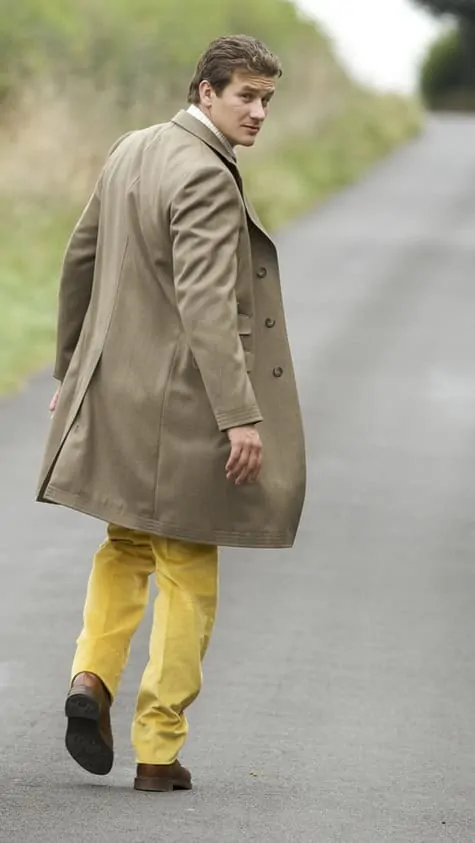
According to them, the “t,” both in the coat and the wider use of the word ‘covert’ in the field, is silent, as its origins are derived from the French word “couvert”.
Where To Buy A Covert Coat?
Off the rack, you will find Covert Coats at Crombie, New & Lingwood and the aforementioned Cordings of Piccadilly. Of course, a bespoke version is always appealing! Personally, I think a flapped chest pocket would look rather nice. Jeremy Hackett recently designed a Covert Coat, in which the cloth is turned inside out for the collar. While looking different than the rest, it is certainly more subtle than a velvet collar.
Do you own a covert coat? If so, what does it look like? I am eager to learn what style you prefer.
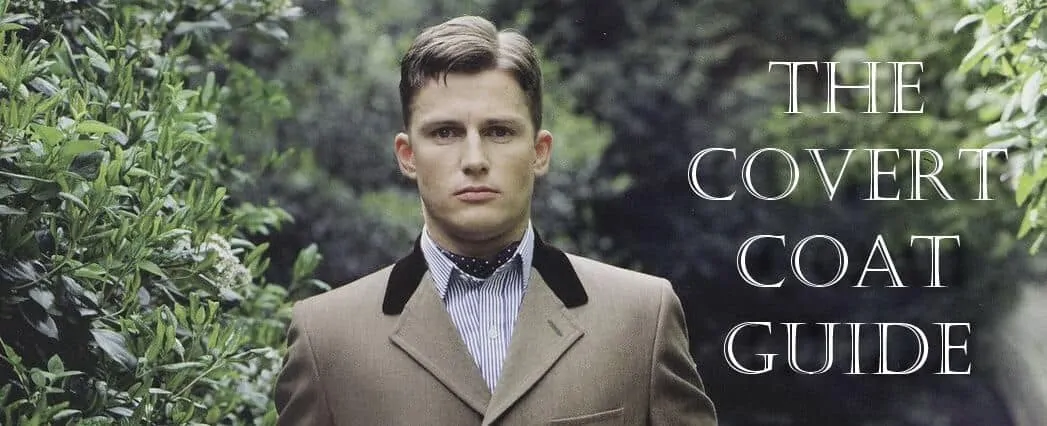
I am interested in obtaining some covert fabric to make some custom made caps. Can you please tell me where I can purchase this fabric by the yard? Thank you.
Jonathan,
I suggest, you get in touch with http://www.hfwltd.com/ . I am sure they can help you find the covert cloth you want.